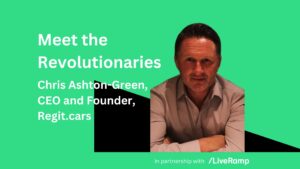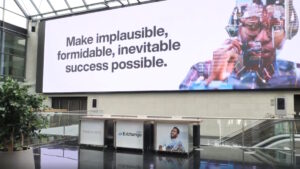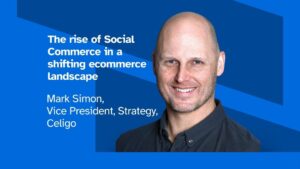ECA columnist Glynn Davis recently spoke with Julia Reynolds, founder of women’s clothing brand Rey House about her journey with data and ecommerce…
Can you tell us a little about Rey House?
Rey House is a brand based around designing and making clothes to fit our target market of Gen X women, although we have a growing number of customers outside of the demographic. We are using big data and AI to build our software to resolve the problem of clothes not fitting. We believe we are the first company in the world to be looking at this problem in this way. We are basically 50% clothing brand and 50% technology. We have developed prototypes and tested our theory and now intend to scale it and use big data to hone it and give us even more detail and optimise.
What were the key drivers for creating the business?
Rey House was born out of an inability to find clothes that fit, are good quality, stylish, wearable and affordable, for women of my generation (40-70 years-old). We felt that the industry did not truly understand our demographic and what suits us. As I started to gather data from family, friends and like-minded women I realised how large the problem actually is. Data from Kantar in September 2022 showed that only 8.2% of the population can easily find clothes to fit, 5% of shoppers think mature customers are catered for, 46% believe quality is very important and 75% of people are put off a brand if they can’t find their size.
From our research we found the priorities for buying clothing were 1. Fit, 2. Quality, and 3. Actual style. These three challenges if not achieved result in low self-esteem and poor body image. The other huge problem is the carbon footprint of the industry. Around 10% of the global carbon footprint comes from 100 billion clothing items made every year of which 30% are never sold, never worn or worn only once. As much as 25% of clothing going into landfill still has the swing tickets on. The average UK online mass market clothing retailer is managing 53% returns rates. On top of this, many online retailers are claiming “green” credentials with poor, little or no robust controls.
What can the fashion industry learn from other sectors?
With a family of engineers, I realised that the fashion industry is very slow in engaging with big data and AI and where it is engaging, it appeared to me that much of it was focused on one end of the value chain or the other. There appeared to be a gap in the middle. Commercial depts in retailers are perhaps not as aligned as they could be with the Technology/IT teams.
In contrast, there is so much going on in other industries that could be applied to the fashion industry. There is definitely a need for different industries to get together and share ideas and be creative in how those initiative can cross-fertilise. A forum is definitely required here. There is some amazing stuff going on in healthcare, the automotive industry and all sorts of engineering spheres, that I believe could be explored and used in the clothing industry.
When I am less busy with this project, I would like to explore some of these and through this project I have made some great contacts, particularly in engineering with industry and academia. Manchester City University is making great progress with 3D printing fabrics as an example.
What skills have you been able to bring to the business from your previous roles?
My understanding of the end-to-end value chain in clothing and fashion has helped me identify where the pinch points are and what the solutions could be. My experience and skills as a product developer and as a CEO have helped me build the business and create the vision and engage with others whose skills are required to build this unique approach to the industry. I have always been blessed with extraordinary levels of tenacity, which some read as being stubborn. This however, appears to be a basic requirement when trying to challenge the status quo in a difficult economic climate, where clothing brands and retail is seen as challenging at best and toxic at worst. My experience is keeping me going, knowing that there is a problem that needs to be solved.
What does your typical day look like?
As we have now secured a Government grant we are now engaged in gathering all the data we require for our software development. My days are spent marketing the business – involving talking about what it is doing, and arranging and delivering events to secure the right data. There is also a lot of justification of the grant and the plans to deliver for compliance.
As we are a small business, there is the day to day running to do. The other major thing I am focused on is getting out there and telling the story to help with some funding requirement, to scale what we are doing and gathering momentum on organisations that may be interested in engaging with us.
I can honestly say there is not one job that I have not done, I even took a digital marketing course to stay relevant, despite being probably the oldest person on the course. Mostly it is fun and I am taking each day as it comes and enjoying the journey with all the ups and downs.
What have been the major challenges for the company so far?
Some parties have been really helpful and engaging and get what we are trying to do, others are slower to get it, or not at all. What is really interesting is that in the main it is the businesses that are data and technology based that clearly see the benefits along with pattern cutters and grading technicians. The old school manufacturers and “rag trade” contingent are proving slow to engage. Innovate UK and their partners have been particularly helpful.
Pace is a challenge, we are keen to move quickly, but this has to be one of life’s lessons that I need to learn. As with most businesses, enough funds to scale and work at pace are slightly restricting and holding us back, but we will get there and what remains strong when we have a bad day is that we stay confident in our vision and mission and every day we are making good progress. Tenacity is our mantra.
What are the major opportunities for the company?
The opportunities are two-fold. The data and software will give us the opportunity to help retailers with their burgeoning online returns issues, help commercial teams make more accurate product development decisions. The data could be further broken down to not only age, shape and size, but to postcode and applied to any gender and age demographic. The data can be used when developing fabric too.
The second angle is that Rey House can grow as a clothing brand, where beautifully designed, quality clothing can be crafted specifically for the demographic that is the most neglected in terms of product availability. There are hundreds of brands out there targeting the demographic, it is just that most of the products simply does not fit and is not to the quality expected, just as the research is telling us.
What are your future plans – what would you ideally like to achieve?
The plan is to develop our technology to the point that we will be able to run the brand side of the business almost totally using technology. Then like Amazon and Ocado sell our tech and processes to retailers so that they too can benefit from the tech and help solve the problems of waste, fit and quality issues in the industry. I personally also want to be able to hear women and men say that they can now easily find beautifully made clothes that fit them, that they feel comfortable in, and they know that they will wear regularly and often. Above all they will feel good about themselves for not only looking good, but knowing they have contributed to helping reduce the industry’s carbon footprint.
What do you think the fashion industry will look like in 10/15 years?
We pride ourselves by looking through the other end of the telescope. There are lots of people developing body scanning devices to ensure that customers select the right size product online. Additionally, there are many businesses working on bespoke and personalised product software. However, there is no one looking at making the clothes in the right size in the first place, designed by professionals and made to last all for a mass-produced price. I firmly believe the future of clothing fit is data-driven and brands that invest in data science are very likely to see a positive impact on their bottom line and customer satisfaction.
In 10-15 years’ time, I believe that fast fashion will be a thing of the past. Peer to peer transactions will be the norm. Consumers will buy less, but better quality. Manufacturing of clothing will be almost entirely automated and big data will be the norm. Fewer people globally will be actively employed in the industry as a result. Moving clothing around the globe will be by exception and clothing will be made closer to home. Bespoke and customisation will be around for those that have the budget and the imagination to create, while the rest of us will want to trust the retailers. A high percentage of fabrics will need to be recycled or someway compostable. Coveted items will be kept and used for years, just as they are today if you are lucky enough to own a designer frock.











